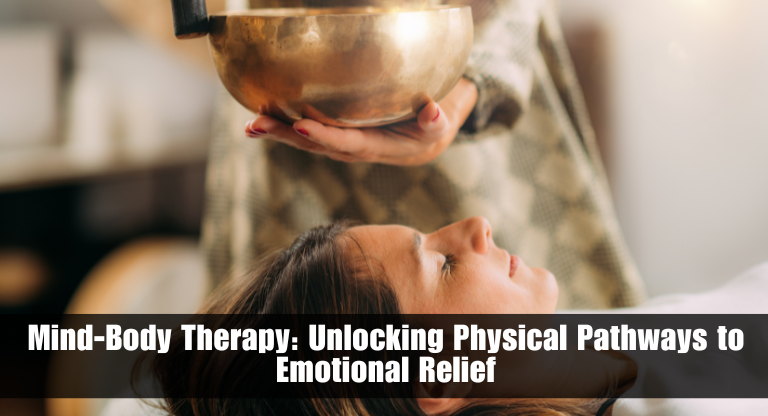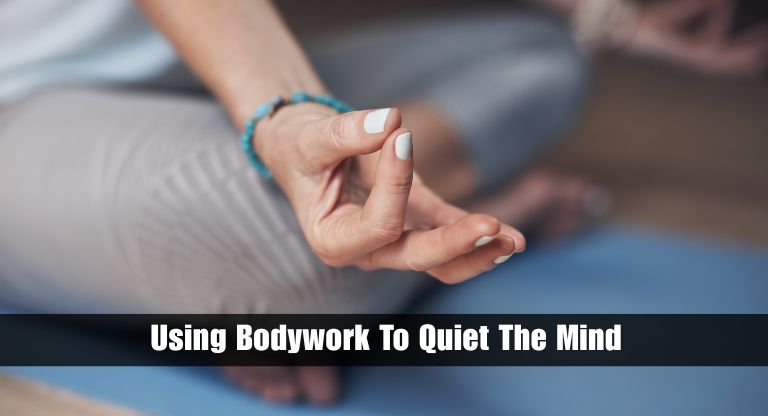Mind-Body Therapy: Accessing Physical Pathways to Emotional Relief

As the complete healing and mental health industry changes, mind-body therapy provides an incredibly powerful channel that integrates our emotional well-being and physical body. With mind-body therapies based on ancient healing practices and contemporary psychology, they meet in an applicable field of inquiry to identify how our emotional health (or health) is related to and how our bodies respond physically to our experiences, and vice versa. When we treat the body, we can achieve emotional relief and healing.
The concept of a Mind-Body connection is not entirely new. Traditional Chinese Medicine and Ayurveda – two instances of ancient healing traditions that derive from the East – had acknowledged the connection between physical illness and emotional health long before it became a relevant concept to modern science. As modern science is also verifying that moods are feelings we feel, and that our actions can be related to a physical condition, there is also a reverse relationship whereby our physical experiences reflect mental conditions.
Stress, trauma, anxiety, and depression not only snatch our thoughts and feelings they tend to appear in our bodies as well. Muscle tension, chronic fatigue, pain, and other bodily problems can all be indicators that something is going on. While our bodies can be a storage of distress, however, they also possess the ability to facilitate healing. Through aware movement, relaxed awareness, and gentle awareness, we are able to bring about beneficial changes in physical, emotional well-being. That is why Mind-Body therapy was born.

What is Mind-Body Therapy?
Mind-Body therapy is an extensive approach recognizing the real connection between emotional feelings and physical responses within our bodies. It utilizes bodily exercises, such as those for breathing, movement, or touching, to take part in emotional constraints and wellness. At the end of the day, it is about listening to the messages from the body and walking in their direction for healing.
More than treating symptoms, Mind-Body therapy enables people to become aware of places where emotional pain exists within their bodies. This creates good feelings, clarity, and balance.
This is commonly seen helping with anxiety, depression, trauma, PTSD, and extreme pain. It also allows everyone to connect back with themselves in a natural way. It provides a healing way of interacting with both mind and body. Some of the more popular types of mind-body therapy are:
- Yoga Therapy
- Mindfulness-Based Stress Reduction (MBSR)
- Somatic Therapy
- Biofeedback
- Breathwork
- Tai Chi and Qigong
- Progressive Muscle Relaxation
- Dance/Movement Therapy
All these therapies follow a similar path to the same end: physical healing through emotional interaction.
The science behind it
You know, science is finally catching up with what a lot of people have felt for ages, that the mind and body are way more connected than we once thought. One big example is this thing called the vagus nerve. It’s part of the system that runs your automatic body stuff like heart rate and digestion, and it actually links your brain to places like your gut and lungs. When you take slow, deep breaths, it gently kicks in and helps calm you down. It’s like a built-in chill button and get this, our bodies can actually hold onto emotions. Not just in our heads, but in our muscles, posture, and even the way we move.
Ever notice how a smell or touch can bring up a memory out of nowhere? That’s somatic memory at work. Some therapies focus on this exact thing, helping people to release old stress or trauma that got “stuck” in the body, but in a way that feels safe and manageable. It’s not magic, it’s biology, just approached from a different angle.
Research that was released in the Journal of Traumatic Stress revealed that body-based therapies such as yoga and somatic experiencing brought down PTSD symptoms among survivors of trauma quite drastically.

Unlocking emotional relief through the body
The elegance of mind-body therapy lies in its capacity to overcome intellectual defenses. Frequently, discussing trauma or emotional distress seems too much or not enough. Mind-body therapies provide a soft but potent alternative by tapping into stored emotions in the body.
Here’s how some of the best-known methods work to release emotional relief:
- Breathwork
Conscious, deep breathing engages the parasympathetic nervous system, informing the body to relax. Some breathwork also releases stored-up emotions. Through rhythmic breathing, individuals commonly report feeling emotional clarity and inner peace.
Somatic experiencing utilizes physical sensations over cognitive reflection. Somatic experiencing assists one in monitoring physical reactions to emotional stimuli and releasing energy associated with trauma or stress in a slow and gradual manner.
- Yoga and movement
Some yoga postures make space in the body where the emotional tension has generated, such as the hips and shoulders. A well-designed therapeutic yoga session can be the best option and provide an emotional breakthrough experience as the body releases the well-established routines
- Mindfulness meditation
Through the awareness of body sensation and the moment, and mindfulness that enables people to accept their emotions without any judgment, and with some repeated practices, it minimizes emotional reactivity and increases emotional toughness.
- Dance/Movement therapy
Movement is one of the ways people can express feelings that are hard to put into words. Creative movement not only releases emotions but also reconnects people with their bodies in fun, powerful ways.
Who can use Mind-Body Therapy?
Mind-body therapy is good for almost anyone looking for a complete method of healing from emotional issues. But it’s most beneficial for:
- Survivors of trauma
- Individuals with depression or anxiety
- Individuals who have chronic pain
- Those who are experiencing grief or numbness
- Individuals recovering from addiction
- Individuals who are feeling stuck and in a traditional therapy setting
Importantly, mind-body therapy is generally used in combination with other treatments that include psychotherapy and medication, and for a more comprehensive healing process.

How to start
If you are interested in mind-body therapy, then look for the following steps:
- Consult a professional: Look for a professional therapist with experience in mind-body techniques.
- Try different practices- Explore yoga, breathwork, or somatic therapy to find what suits you.
- Practice consistency – Daily sessions are the most effective. Even a short daily practice like mindful breathing can be incredibly effective.
- Pay attention to your body – The practice is about developing awareness and kindness toward your physical and emotional body.
Complete pathway to healing
Mind-body therapy offers you an important thing: you will heal with it whole day, and also not just the brain, it also offers amazing opportunities for emotional release and flexibility through increased awareness of sensations and movement, breathing, and awareness. In a world where stress and disconnection are common, mind-body therapy offers you a basic and effective way to reconnect and heal from it.









